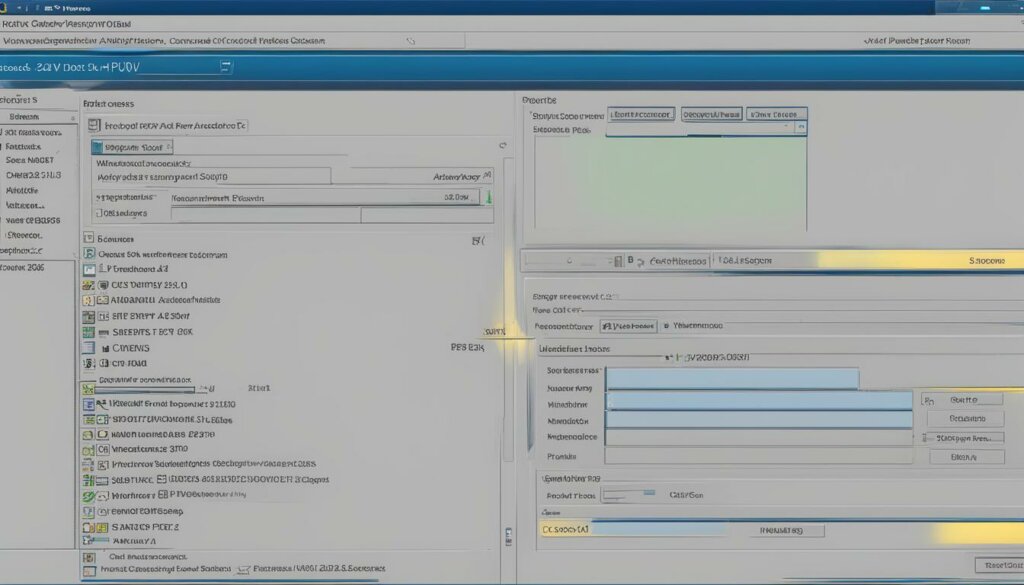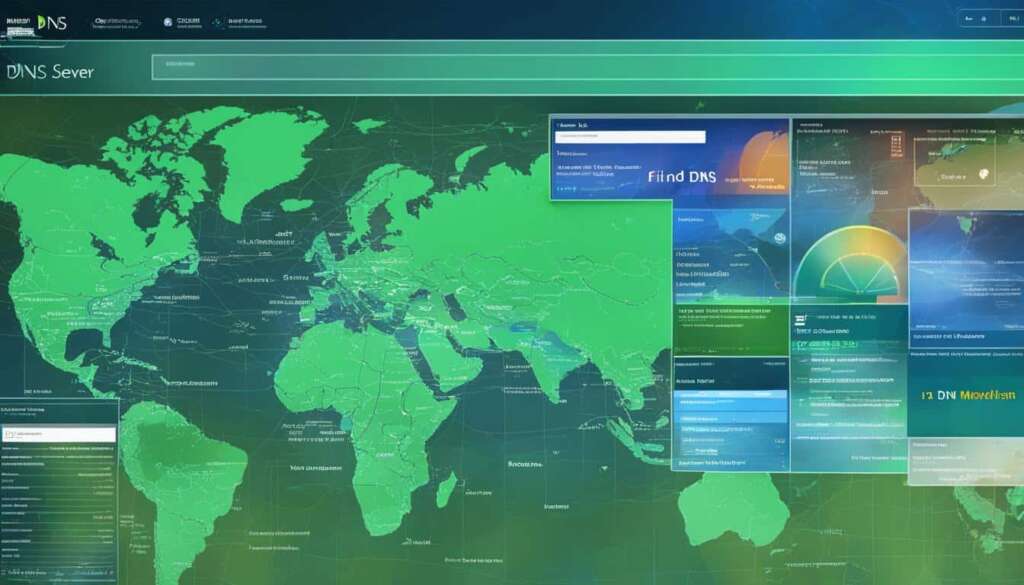Table of Contents
In today’s fast-paced digital world, having a smooth and seamless browsing experience is essential. Slow-loading websites and lagging internet speeds can be frustrating, but did you know that changing your DNS server can significantly improve your online experience? In this guide, we will show you how to change your DNS server settings and unlock faster web browsing.
The Domain Name System (DNS) is like a phone book for the internet, translating domain names into IP addresses. By default, your computer uses the DNS server provided by your internet service provider (ISP). However, these servers might not always offer the best performance or security. That’s where changing your DNS server settings comes into play.
There are several third-party DNS services available that often provide faster speeds and enhanced security compared to your ISP’s server. Some popular options include Google DNS, Cloudflare, OpenDNS, and Comodo SecureDNS. By switching to one of these providers, you can optimize your web browsing experience and enjoy improved performance.
But how exactly do you change your DNS server settings? Don’t worry; it’s simpler than you might think. In the following sections, we will walk you through the process of changing DNS settings on both Windows 10 and Windows 11. We will also discuss the benefits of changing your DNS server and recommend some third-party providers worth considering.
So, if you’re ready to unlock a faster and more secure browsing experience, let’s get started with changing your DNS server settings!
How to Change DNS Settings on Windows 10
Changing the DNS server settings on Windows 10 is a simple process that can improve your browsing experience. By customizing the DNS configuration, you can enhance the speed and security of your internet connection. Follow these steps to modify the DNS server tutorial:
Step 1: Open the Network and Internet settings on your Windows 10 computer. You can do this by clicking on the Start menu and selecting “Settings.”
Step 2: In the Settings window, choose the “Network & Internet” option.
Step 3: Navigate to the “Advanced network settings” section and select the type of connection you want to modify, whether it’s Ethernet or Wi-Fi.
Step 4: Click on “View additional Properties” to access the DNS server settings.
Step 5: Locate the option for DNS server configuration and change the setting from “Automatic (DHCP)” to “Manual.”
Step 6: Enter the IP addresses of the preferred and alternate DNS servers provided by your chosen DNS server tutorial. These addresses are typically provided by third-party DNS service providers.
Here’s an example:
| DNS Server | IP Address |
|---|---|
| Preferred DNS Server | 8.8.8.8 |
| Alternate DNS Server | 8.8.4.4 |
Step 7: Save the changes and close the settings window. Your DNS server configuration will now be updated, and your computer will use the specified DNS servers for all internet connections.
By changing the DNS settings on Windows 10, you can optimize your internet connection and enjoy faster browsing speeds and improved security. Experiment with different DNS server providers, such as Google DNS, Cloudflare, or OpenDNS, to find the one that best suits your needs.
How to Change DNS Settings on Windows 11
If you’re using Windows 11, you can easily change your DNS server settings to improve your browsing experience. Follow these simple steps:
- Go to Settings and select Network & Internet.
- Choose the option for Advanced network settings.
- Click on the type of connection you want to modify, whether it’s Ethernet or Wi-Fi.
- Go to View additional Properties and find the Edit button for DNS server assignment.
- Change the setting from Automatic (DHCP) to Manual.
- Enter the IP addresses for the preferred and alternate DNS servers.
By manually changing the DNS server settings on your Windows 11 device, you can have more control over your internet connection and potentially achieve faster and more secure browsing.
| Windows 11 DNS Settings | Benefits |
|---|---|
| Change DNS server from Automatic to Manual | Allows customization and control |
| Enter IP addresses for preferred and alternate DNS servers | Potential for faster and more secure browsing |
Should You Change the IPv6 Address?
With the transition to IPv6, it’s important to consider whether modifying your DNS servers for IPv6 is necessary. Many internet service providers (ISPs) either do not support IPv6 or are still in the testing phase. To determine if your ISP supports IPv6, you can visit the Test-IPv6 website. If your ISP does support IPv6, most third-party DNS services offer IPv6 addresses as well.
Changing your IPv6 DNS servers can provide several benefits, including enhanced security, improved network performance, and compatibility with IPv6-enabled websites. By altering your DNS server settings, you have the opportunity to optimize your online experience and ensure smooth connectivity.
Image:

Third-Party DNS Providers
After you have learned how to change your DNS server settings, it’s time to explore some of the third-party services worth trying. These alternative DNS servers offer different features and benefits, catering to various user preferences and needs.
Google Public DNS
Google Public DNS is one of the most popular options when it comes to alternative DNS servers. It provides fast and reliable DNS resolution, ensuring efficient browsing experience. With Google’s emphasis on security, you can trust that your online activities are protected.
Cloudflare DNS
If privacy and speed are your priorities, Cloudflare DNS is an excellent choice. It prioritizes user privacy by not logging IP addresses, and its global network infrastructure ensures quick and responsive DNS resolution.
OpenDNS
Owned by Cisco, OpenDNS offers both free and paid packages for consumers. One of its standout features is the option to block adult content, making it especially useful for families. It also provides protection against malicious domains, enhancing overall online security.
Comodo SecureDNS
Comodo SecureDNS, developed by a trusted cybersecurity company, focuses on protecting users against phishing attacks and malware. With Comodo SecureDNS, you can browse the web with confidence, knowing that you are shielded from potential online threats.
These are just a few examples of third-party DNS providers that you can consider. Each offers unique features and advantages, allowing you to tailor your DNS server settings according to your specific requirements and preferences.
| DNS Provider | Features |
|---|---|
| Google Public DNS | Fast and secure DNS resolution |
| Cloudflare DNS | Privacy-focused and high-speed |
| OpenDNS | Free and paid options, content filtering, protection against malicious domains |
| Comodo SecureDNS | Phishing attack and malware protection |
By exploring these alternative DNS server providers, you can harness the power of the internet more effectively, with enhanced security and optimized performance.
Change Your Router’s DNS Settings
To unlock a faster and more secure web browsing experience for all devices in your home, you can change the DNS settings on your router. By configuring the DNS server, you can set up a more reliable and efficient connection. Follow these simple steps to get started:
- First, sign into your router’s firmware by entering the default IP address (e.g., 192.168.1.1) in your web browser’s address bar. If you’re unsure of the default IP address, consult your router’s manual or check the manufacturer’s website.
- Once you’ve accessed the router settings, look for a section related to either Internet or network setup. The exact location may vary depending on your router’s make and model.
- Within the Internet or network setup section, you should find the option for DNS addresses. This is where you’ll make the necessary changes to your DNS settings.
- Change the existing setting from automatically obtaining DNS addresses from your Internet Service Provider (ISP) to manually assigning the preferred and alternate DNS addresses from the third-party DNS provider of your choice. Consult the documentation provided by the DNS provider for the specific IP addresses to use.
- After entering the preferred and alternate DNS addresses, save the changes and apply the new settings to your router.
Once the settings are applied, all devices connected to your home network will use the newly configured DNS server. This ensures that every device benefits from the improved performance and security provided by the alternative DNS provider.
Remember to periodically check if there are any updates or improvements to your chosen DNS provider’s IP addresses. By keeping your DNS settings up to date, you can continue to enjoy a fast and secure browsing experience.
To give you a clearer idea of the steps involved in changing your router’s DNS settings, refer to the table below:
| Step | Description |
|---|---|
| 1 | Access your router’s firmware by entering the default IP address in your web browser. |
| 2 | Locate the section related to Internet or network setup. |
| 3 | Find the option for DNS addresses. |
| 4 | Change the existing setting from automatic to manual, and enter the preferred and alternate DNS addresses provided by your chosen DNS provider. |
| 5 | Save the changes and apply them to your router. |

By following these instructions, you can harness the power of alternative DNS services to optimize your internet connection and enjoy a faster, more secure online experience.
Benefits of Changing DNS Servers
Changing your DNS server can provide several benefits. It can speed up your web browsing by using faster servers that are optimized for efficiency. It can also improve security and privacy by using DNS servers that prioritize protection against spoofing attacks and logging IP addresses. Additionally, changing your DNS server can help you access blocked content and avoid DNS hijacking and phishing attacks. It gives you more customization and control over your online experience.
When you change your DNS server to a faster and more reliable option, you can experience significant improvements in your web browsing speed. Traditional DNS servers provided by your ISP might not be optimized for performance, resulting in slower loading times for websites and online services. By switching to a faster DNS server, you can reduce latency and enjoy a smoother browsing experience.
In addition to faster web browsing, changing your DNS server can also enhance your online security and privacy. Some third-party DNS services offer advanced security features such as anti-phishing protection and malware blocking. These services prioritize security to ensure a secure online experience for users.
“Changing your DNS server can be a game-changer for your internet speed and security. By utilizing faster servers and prioritizing protection against attacks, you can enjoy a faster and more secure online experience.” – IT Security Expert
Moreover, changing your DNS server can help you bypass restrictions and access blocked content. In some countries or networks, certain websites or services may be restricted or censored. By switching to a DNS server that is not subject to these restrictions, you can regain access to blocked content and enjoy a more open internet experience.
Furthermore, by changing your DNS server, you can protect yourself against DNS hijacking and phishing attacks. DNS hijacking involves redirecting your web traffic to malicious websites, while phishing attacks aim to steal your sensitive information through fraudulent websites. By using a trusted DNS server that prioritizes security, you can minimize the risk of falling victim to these types of attacks.
Comparing DNS Providers
| DNS Provider | Speed | Security Features | Blocked Content Access |
|---|---|---|---|
| Google DNS | Fast | Basic | No |
| Cloudflare DNS | Fast | Advanced | No |
| OpenDNS | Fast | Advanced | Yes |
| Comodo SecureDNS | Fast | Advanced | No |
Comparing different DNS providers can help you choose the one that best suits your needs. Each provider offers different advantages in terms of speed, security features, and access to blocked content. Consider your priorities and preferences when selecting the DNS server that will provide you with a faster web browsing experience and a more secure online journey.
Conclusion
Changing your DNS server settings can unlock a faster and more secure web browsing experience. By using third-party DNS providers like Google DNS, Cloudflare, OpenDNS, or Comodo SecureDNS, you can enhance your online privacy, access blocked content, and protect yourself from DNS hijacking and phishing attacks. Take control of your DNS settings to optimize your browsing speed and enjoy a safer online journey.
FAQ
How can I change the DNS server on Windows 10?
To change the DNS server on Windows 10, go to Network and Internet settings, select Advanced network settings, choose the type of connection (Ethernet or Wi-Fi), click on View additional Properties, find the DNS server settings, change from Automatic (DHCP) to Manual, and enter the IP addresses for the preferred and alternate DNS servers.
How do I change the DNS settings on Windows 11?
To change the DNS settings on Windows 11, go to Settings, select Network & Internet, choose the Advanced network settings, click on the type of connection (Ethernet or Wi-Fi), go to View additional Properties, find the Edit button for DNS server assignment, change from Automatic (DHCP) to Manual, and enter the IP addresses for the preferred and alternate DNS servers.
Should I change the IPv6 DNS servers as well?
If your internet provider supports IPv6, it is worth considering changing the DNS servers for IPv6 as well. Most third-party DNS services offer IPv6 addresses, providing a more comprehensive DNS solution.
Which are some popular third-party DNS providers?
Some popular third-party DNS providers include Google Public DNS, Cloudflare DNS, OpenDNS, and Comodo SecureDNS.
How do I change the DNS settings on my router?
To change the DNS settings on your router, sign into your router’s firmware, look for a setting related to Internet or network setup, find the section for DNS addresses, change from getting the addresses from your ISP to manually assigning the preferred and alternate addresses from the third-party DNS provider, and apply the new settings to your router.
What are the benefits of changing DNS servers?
Changing DNS servers can unlock faster web browsing, improve security and privacy, access blocked content, avoid DNS hijacking and phishing attacks, and provide more customization and control over your online experience.













